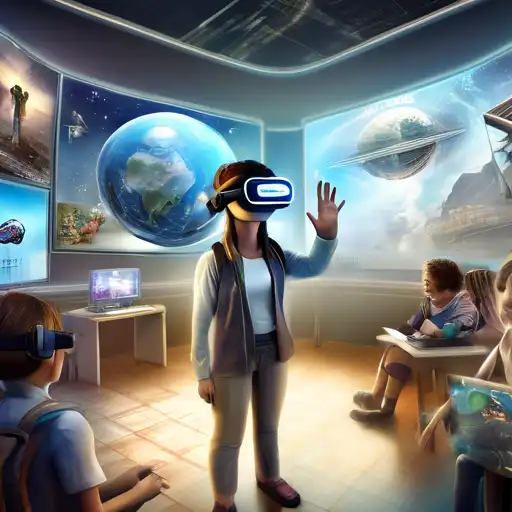Introduction to Virtual Reality in Education
Virtual Reality (VR) is rapidly transforming the educational landscape, offering immersive learning experiences that were once beyond imagination. This technology is not just a tool for entertainment but a powerful educational instrument that can enhance understanding, retention, and engagement among students of all ages.
The Benefits of VR in Learning Environments
VR brings a multitude of benefits to the educational sector. It allows students to explore complex concepts in a three-dimensional space, making abstract ideas tangible. For instance, medical students can perform virtual dissections, and history classes can take virtual field trips to ancient civilizations. This hands-on approach fosters a deeper understanding and retention of knowledge.
Challenges and Considerations
Despite its potential, integrating VR into education comes with challenges. The cost of VR equipment and the need for technical support can be prohibitive for some institutions. Additionally, there's a learning curve for both educators and students to effectively use this technology. However, as VR becomes more accessible, these barriers are gradually diminishing.
Future Prospects of VR in Education
The future of VR in education is bright, with ongoing advancements making it more affordable and user-friendly. Innovations such as augmented reality (AR) and mixed reality (MR) are also being explored to complement VR, offering even more versatile learning tools. As these technologies evolve, they promise to further revolutionize how we teach and learn.
Implementing VR in Your Educational Institution
For schools and universities looking to adopt VR, starting small is key. Pilot programs can help assess the technology's impact and feasibility. Partnering with VR content providers and investing in teacher training are also crucial steps to ensure successful integration. With the right approach, VR can significantly enhance educational outcomes.
Conclusion
Virtual Reality is setting the stage for a new era in education, where learning is not just about reading and listening but experiencing. As we continue to explore its potential, VR is poised to become an indispensable part of educational curricula worldwide, making learning more engaging, effective, and fun.
For more insights on innovative learning technologies, check out our articles on EdTech Trends and The Digital Classroom.
